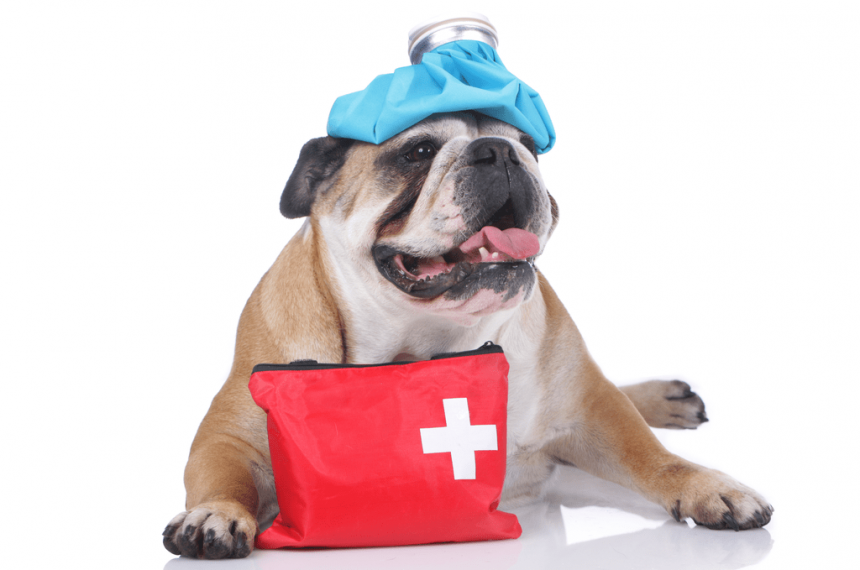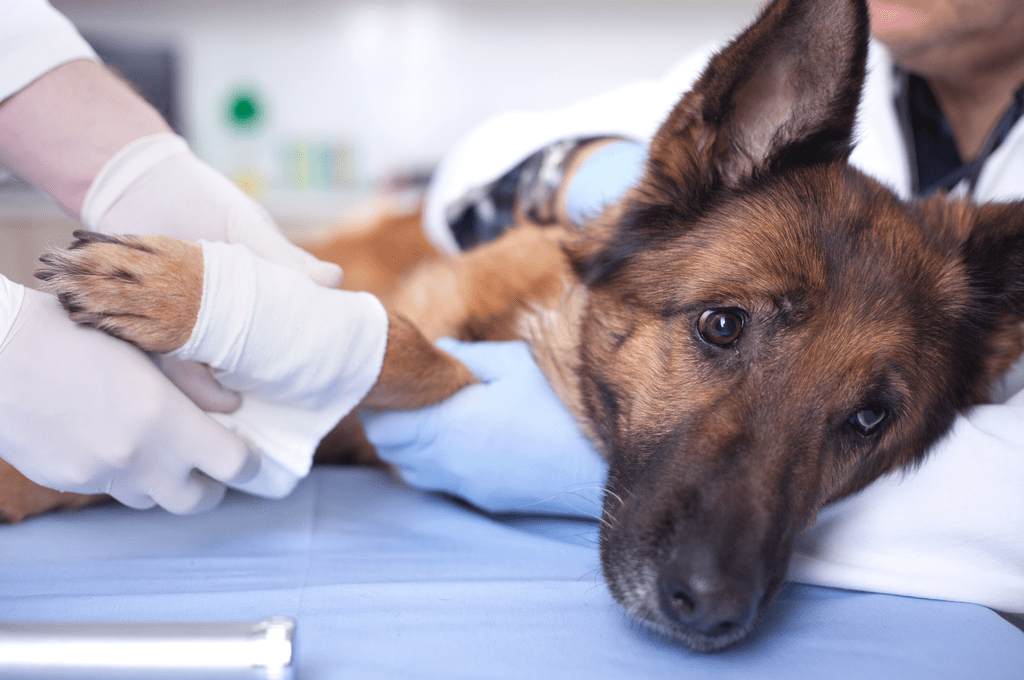Having a pet is not just about playing with it or having a good time. Pet owner to be a responsibility. Most people misunderstand the most familiar pet emergencies and do not call for help until it is too late.
Getting a list of the most common emergencies that require the attention of a veterinarian and keeping it on an edge will lead you to act quickly in possible situations and conscious ways to the car.
What Do You Need in an Emergency for Dogs?
The right preparation for first aid can help you a lot in implementing first aid. Once you think about what needs to be done, it will be easier for you to remain calm and be cautious in an emergency.
Many veterinarians, animal rescue associations or animal protection associations therefore offer first aid courses for dogs. There you can find out what dangers lurk in everyday life or get information. If you benefit from all these courses, you will be able to apply the most important steps of first aid under practical and professional guidance.
We have examined your dog what you should do in what situation. Read our article to understand the silence of your little friend and help him.
1- Severe Bleeding
This is the number one emergency because a large number of people think that first aid to an animal experiencing this type of problem can be done at home. If the bleeding is severe or lasts longer than five minutes, it should be checked by a veterinarian.
Your dog may be hiding a bigger problem than it seems, or the animal may need stitches to heal without infection. The cut may be deeper than it seems, or it may be internal bleeding that requires surgery.
You may be interested: Puppy Dog Vaccination Calendar 2022 Prices
2 Difficulty Drowning and Breathing
As with humans, you should not expect an animal to recover when it cannot breathe. Never try to clear the airway and always learn animal first aid to keep the animal safe.
Even if your intervention to make sure your dog is safe helps him breathe again, take him to a veterinarian. The veterinarian is the best trained person to make sure that the animal does not have internal damage that causes breathing problems.
3-Blood From Extremities (Arm and Legs)
If you have sputum, vomit, stool, nose, ears, eyes, or blood in the mouth, it is important to find out why. Make sure there are no other injuries running from your attention.
Blood should never be taken lightly. If blood is found to come from an animal, seek emergency care immediately. There may be unseen internal injuries.
4- Toilet Failure
If the animal has pain in urination or defecation, or is unable to do any of them, it is important to find out why. The animal may have a bigger problem than you can handle, and it may need a doctor's care.
Animals do not usually express their pain, so an ongoing problem can turn into a life-threatening problem without your knowledge. Be sure to intervene if you are after a while and cannot defecate
5 Injury of the Eyes
The eyes of an animal are structured differently from the eyes of a person. If the eye is injured, there may be internal damage to structures close to the brain. Asking for help from the vet will prevent your pet from getting more harm.
6-Poison Cooking
Many things that are good for humans are toxic to animals. Substances such as alcoholic beverages, multivitamins, chocolate, pest venom and more are very dangerous. They are also substances that an animal will willingly eat.
Find out what substances are toxic to your pet and call a veterinary emergency if you suspect your animal is swallowing any toxic substances.
You may be interested: Dogs Separation Anxiety (Fear)
7-Sightedness
If your dog gets a condition such as epilepsy, your vet will need to see and detect it immediately. Surprised, unresponsive and uncontrolled attack on those around them are included in these seizures.
These activities indicate a problem in the brain, and the animal needs immediate help. The vet can assess the situation and require further testing to figure out how to best help the animal.
In order not to harm him during the seizure, you must protect him from falling (for example, from the couch) or following him in water containers, puddles or lakes and drowning him. You can also put a blanket under the head so that it does not hit hard.
8-Ballness and Broken Bones
If your pet is limping or has some leg problems, waiting for “iying” is never a good idea. Allowing this to happen will cause the animal to suffer unnecessarily later in life.
Solve these problems by taking the animal to the veterinarian and help him live a longer, healthier and happier life.
9 Pain and Anxiety
As we mentioned earlier, pets do not tell their people when they have pain. If an animal shows signs of pain, it has progressed to a severe condition, and the animal must see a veterinarian immediately.
Another way to express pain or illness is anxiety. If your normally happy dog suddenly bites your hand or does not welcome strangers from their normal state, there is a physical problem.
Call a veterinarian immediately to check for any possible pain and to have the animal evaluated. If you can pinpoint the area where the pain is, it will help diagnose the veterinarian. Since these notes will also help the veterinarian, we recommend that you also pay attention to the change in behavior and anxiety activities of the animal.
10-Hot Shock
As the weather warms up, the stories of our little friends being hot hit come to our ears differently. As the animal left in the cars and stories of sunshocks come to light, the awareness of heatstroke increases. If an animal is suffering from heatstroke, it should immediately appear to a veterinarian. Some signs of heat stroke include:
- Do not over-breath
- Dark or bright red gums
- Dry tongue
- Unnecessary reactions or seizures
- Bloody diarrhea or vomiting
11-Violent Vomiting/Diarrhea
Many people underestimate such ailments, but if any of them have reached a serious level, the animal will cause dehydration (loss of fluid) and rapid death. It is important to find out why the animal is showing this reaction.
Take your dog to the vet and try to remember what the animal ate. Consider the poisons that the animal may have encountered using the list of poisons mentioned earlier, such as chocolate, pesticides, and drinks.
The information you can provide about your pet's latest activities will help the veterinarian figure out what's wrong.
You may be interested: Usage and Advantages of Dog Training Fence
12 Refusing to Drink
An animal wants to drink water all the time. This is normal behavior. If your dog hasn't had anything to drink in the last 24 hours despite the available water, take him to the vet.
It is very important to understand your little friend and keep the water bowl clean. But even if the food container is dirty, it will eventually drink water from it again. Refusing to do so within 24 hours is an indication of an emergency.
13 Loss of Consciousness
This problem is an obvious one, but some pet owners may think their animals are just sleeping.
If your dog cannot wake up from sleep, contact a veterinarian immediately. The animal may have fainted. The vet will need to evaluate the animal to find out what could be causing the animal to lose consciousness.
How do I know if my dog has an emergency?
Signs that Your Pet May be Having an Emergency, swollen, or painful abdomen, Difficulty breathing, excessive coughing or choking. Inflammation or injury to the eye. Open pain responses, unconscious behavior or stumbling in reactions, uncontrolled bleeding, repeated vomiting, Loss of consciousness.
Should my dog's stomach move while breathing?
Watching a healthy dog breathe should also not be any sign of effort in breathing. Breathing should be rhythmic and not fatigued. Both the dog's belly and chest need to move in and out together, allowing the lungs to expand to the maximum.


